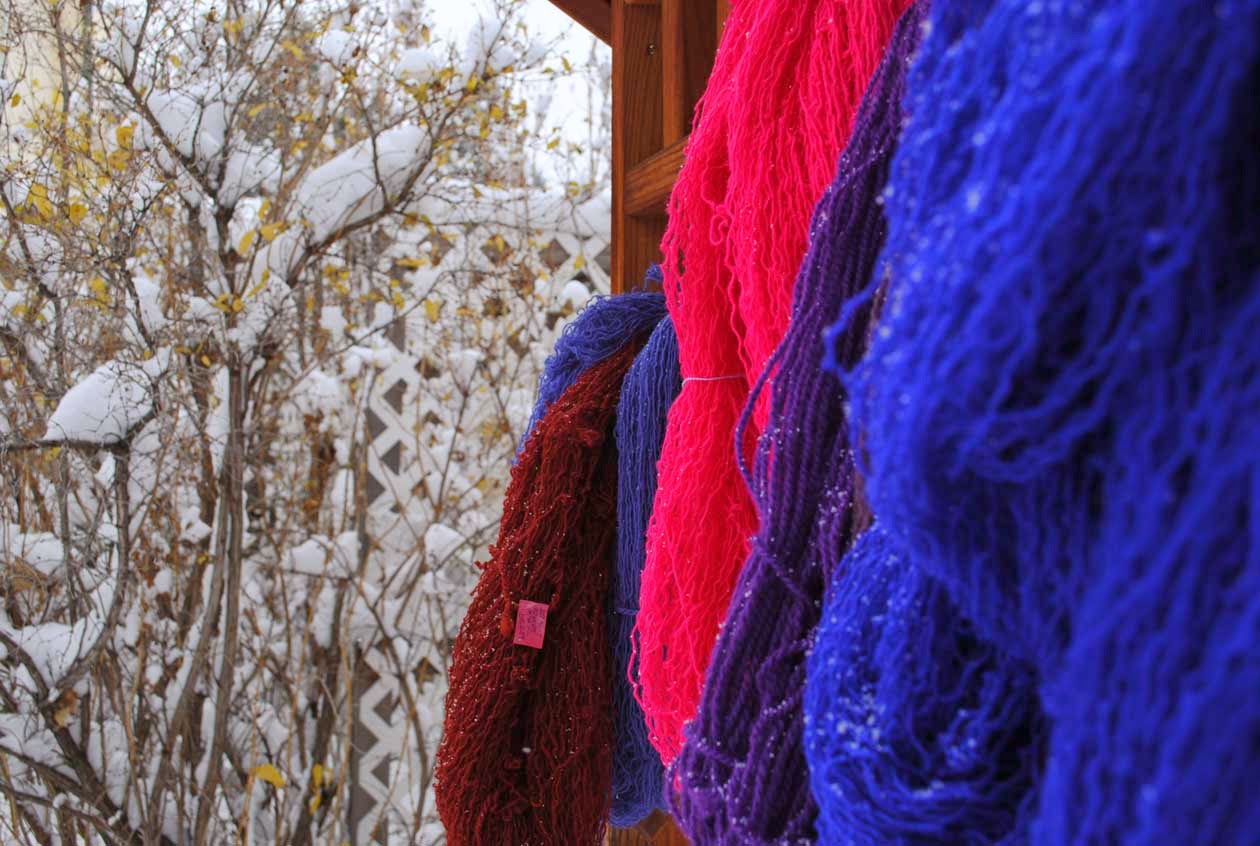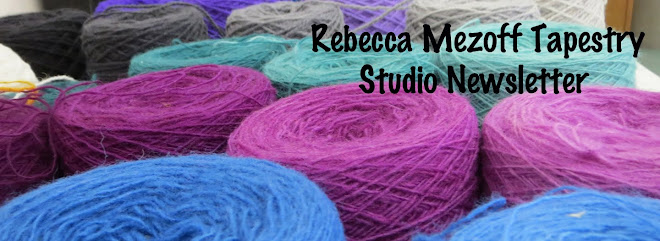I get this question a lot when students come to one of my classes for the first time. I try to let them know ahead of time, but many miss the message. I let them weave from the front. I even teach them how to do it. But I continue to make my work woven from the back.
If that isn't bad enough, I also use a low-warp loom. Yes. I weave my tapestries on a horizontal loom with treadles. And it even has a beater. And I use it. I know. Crazy.
For those of you who don't understand, I can only list the reasons why... and then shrug a little and tell you that this is how I learned.
Let me give you a few reasons why you might want to try it.
1. For the first I'll defer to a true master. When reading Jean Pierre Larochette's new book The Tree of Lives recently (see excerpts in this post), I came across this passage. Given the well-deserved reverence for the name Jean Pierre Larochette in tapestry circles, I feel just a little smug in quoting this from page 317-8 (just in case you have the book and want to make sure I wasn't making this up).
I do not intend to eulogize low-warp weaving. But feeling the urge of a vanishing species -- the low-warp, weaving-from-the-back tapestry weaver -- I have to point out that there is an experience, regardless of the merits of the outcome there is a physical and mental experience that is unique to the practice of weaving from the back. Of course I am thinking about the weaver's experience, but to some extent this is perceived by the viewer, too. It is part of the enchantment and attraction that tapestry exerts on us. Weaving from the back allows for the inclusion of the intuitive, that which transcends the individual effect of any artist, beyond the analytical eye-driven decision making process. The sensorial wholesomeness of the traditional approach has inspired weavers of all ages. As in any art form, weaving is an attempt to capture and communicate an idea. The idea in the artist's mind, always elusive, can be expressed only by approximation, lyrical suggestion. The tapestry expression is best fulfilled when it retains its poetic spirit. In the effort toward visual control the woven image is often dissected to such an extent that, although we may admire its well-crafted quality, that which speaks to our emotions is lost.*2. Another giant of contemporary tapestry weaving, Archie Brennan, began weaving from the back. Somewhere along the way he switched to weaving from the front. He has frequently stated (or at least it is frequently repeated by tapestry weavers) that weaving from the back is driven by technique and weaving from the front is driven by image. In a world where WYSIWYG**, perhaps this is the way it should be. All I know is that mysterious quality that Jean Pierre talks about in the quote above is something that is important to me.
3. Technique. Several techniques I use frequently are easier from the back. One is a jump-over technique which is just a form of regular hatching. I hate trying to fish those pairs of butterflies out from behind every other sequence and have much more success with their placement and color change from the back. Another is splicing. I love having a clean back to my tapestries. It makes them float in the air, means they can be thin and flat, and sometimes seen from the back. So I like to splice my tails so I can snip off the ends instead of sewing them in, and it is easier to splice with the tails coming toward you. And the one interlock join I use (see this video) leaves a flatter join when woven from the back. Other people use joins like the double weft interlock which also are easier from the back.
4. When weaving from the front you are in constant contact with the front side of your work which makes it harder to keep it clean over the length of a project. This is probably more of an issue on a low-warp loom where the fabric goes across the breast beam than a high-warp loom.
5. I get the surprise of seeing a piece I have never seen before when I cut it off. No matter how I think I know what it will look like, I don't. Fun, right?
6. It is hard to teach an old dog new tricks. I like it my way.
I suppose the
*Larochette, J.P., Lurie, Y (2014). The Tree of Lives: Adventures Between Warp and Weft. Berkeley, CA: Genesis Press.
**What You See is What You Get


















